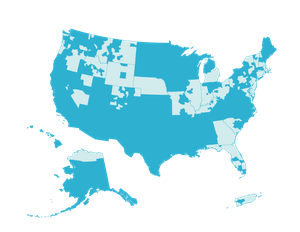Letter from the Editor: Broadband Access and Digital Equity
Broadband access is an essential component of every healthy, vibrant community – among other things, it allows individuals to look up health resources or find and apply for job opportunities. Despite its importance, as recently as 2014 approximately 35 million Americans were still without broadband access, with a particularly stark divide in rural America, where only 67 percent of residents had access to broadband.
To help close the digital divide, policymakers and agencies are proposing new resources and programs. The Digital Equity Act of Act of 2019 would authorize over $1 billion in Federal grants over a five year period to support digital inclusion programs throughout the United States. The Federal Communications Commission (FCC) has also committed over $1 billion annually over the next ten years to increase rural broadband access as part of their Rural Digital Opportunity Fund.
Community development practitioners play a critical role in helping communities access broadband. In addition to financing the infrastructure necessary to expand access to internet, they also convene public and private partners to help fund complicated, large-scale projects. Community-based partners also advocate for additional resources to narrow the access gap in rural areas. Because of their grounding in rural life, these organizations often have a more accurate picture of broadband access needs than other official or private sources.
In this Spotlight on Digital Equity and Broadband Access, we’ve compiled stories, resources and guides to help community development practitioners understand the digital divide in America, and to learn from work already underway. You can learn more about a project to run high-speed fiber in rural Wyoming and a new app to accurately capture areas without access in this story. We’re also highlighting a piece on the impact on inequality of being disconnected in this blog post from a CLASP contributor. You will also find resources like this report from the Digital Equity Lab on preparing for the first digital census, and this tool from Pew to explore how states are expanding broadban
